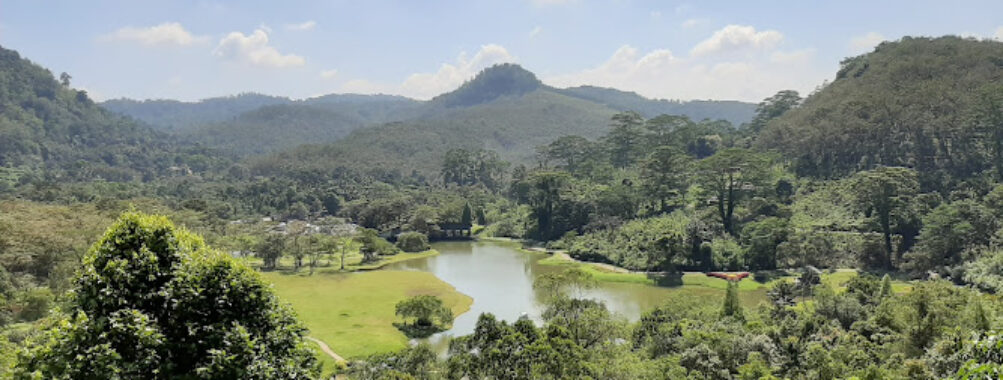
Seethawaka Wet Zone Botanical Gardens
Table of Contents Seethawaka Wet Zone Botanical Gardens is one of those rare places that feels like stepping into another world—lush, misty, and humming with life. Located in Sri Lanka’s wet zone, this 42-hectare garden unfolds across rolling hills and shimmering waterways, where every turn seems to whisper a new story from nature. Originally a rubber and tea plantation, the land has been transformed into a sanctuary for native flora, particularly the endangered and rare species of the island’s rainforests. You can practically feel the air thick with moisture and the scent of wild blooms as you wander through the trails. What makes this garden special isn’t just its beauty—it’s the purpose behind it. It’s a place of conservation, research, and quiet reflection. The garden supports the preservation of Sri Lanka’s wet zone plant species, many of which are found nowhere else on Earth. The bamboo groves sway gently in the wind, the wetlands shimmer with dragonflies, and the flower gardens burst with color that changes with the seasons. It’s the kind of place that makes you slow down, breathe deeper, and remember that the planet still holds untouched corners worth protecting. Now, I’ve been to quite a few botanical gardens in my travels, but Seethawaka has this raw, almost mystical charm. It doesn’t feel overly manicured or artificial. You’ll find patches of wild grass, muddy trails after a good rain, and maybe a frog hopping across your path. It’s real nature—alive and unpredictable. And that’s what makes it so refreshing. Visitors often come here expecting just another garden but leave with muddy shoes, a full camera roll, and a quiet sense of awe. Of course, like any place, it has its quirks. Some areas can get crowded on weekends, and if you’re not a fan of humidity, the wet zone climate might test your patience a bit. But honestly, that’s part of the adventure. Bring a hat, some water, and an open mind—you’ll be rewarded with a day that feels like a mini escape into the heart of Sri Lanka’s natural soul. It’s the kind of place that caters to both the quiet wanderer and the family looking for a relaxed day out. Whether you’re into photography, botany, or just need a break from the city noise, Seethawaka offers a little pocket of calm that feels far away from everything. The garden is open throughout the year, but if you want to experience it at its best, visit between December and April. During this period, the weather is relatively dry, and the trails are easier to navigate. The flowers are in full bloom, the air is crisp, and the light is perfect for photography. That said, there’s something magical about visiting after a light rain too—the leaves glisten, the streams swell, and the whole place feels alive. Just wear good shoes because the paths can get slippery. I once visited in the middle of a drizzle, and honestly, it was unforgettable. The mist hung low over the hills, and the sound of raindrops on bamboo leaves was almost meditative. So don’t write off the rainy season entirely—it has its own kind of beauty. But if you’re not keen on getting wet, stick to the drier months. Reaching Seethawaka Wet Zone Botanical Gardens is fairly straightforward. It’s located a short drive from Avissawella, and the road leading there winds through small villages and scenic countryside. If you’re coming from Colombo, it takes around an hour and a half by car, depending on traffic. The drive itself is part of the experience—you’ll pass tea estates, waterfalls, and stretches of jungle that hint at what’s waiting ahead. Public transport is available too, though it can be a bit of a puzzle if you’re not familiar with local routes. Buses run regularly to Avissawella, and from there, you can take a tuk-tuk to the garden entrance. Personally, I’d recommend hiring a private car or taxi if you can—it’s more comfortable, and you’ll have the freedom to stop along the way for those spontaneous photo ops or a cup of Sri Lankan tea at a roadside stall. Here’s the thing about visiting Seethawaka—if you plan it right, you’ll have an incredible day. But a little preparation goes a long way. Here are some tips based on both experience and a few trial-and-error moments: One personal tip—take a moment to just sit by the lake near the center of the garden. There’s usually a soft breeze, and the reflections of the hills on the water are just mesmerizing. I remember sitting there for nearly an hour, watching the light shift and feeling completely disconnected from the usual rush of everyday life. It’s that kind of place—one that invites you to slow down and just be present. Overall, Seethawaka Wet Zone Botanical Gardens is more than a tourist spot—it’s a reminder of what Sri Lanka’s natural world has to offer when it’s protected and cherished. Whether you’re a nature lover, a photographer, or just someone looking for peace and quiet, this garden delivers an experience that’s both grounding and inspiring. Sure, it’s not perfect—some trails could use better signage, and the humidity can be a bit much—but that’s part of its charm. It’s real, it’s alive, and it’s waiting for you to explore it.Description
Key Features
Best Time to Visit
How to Get There
Tips for Visiting
Location
Places to Stay Near Seethawaka Wet Zone Botanical Gardens
Find and Book a Tour
Explore More Travel Guides
No reviews found! Be the first to review!